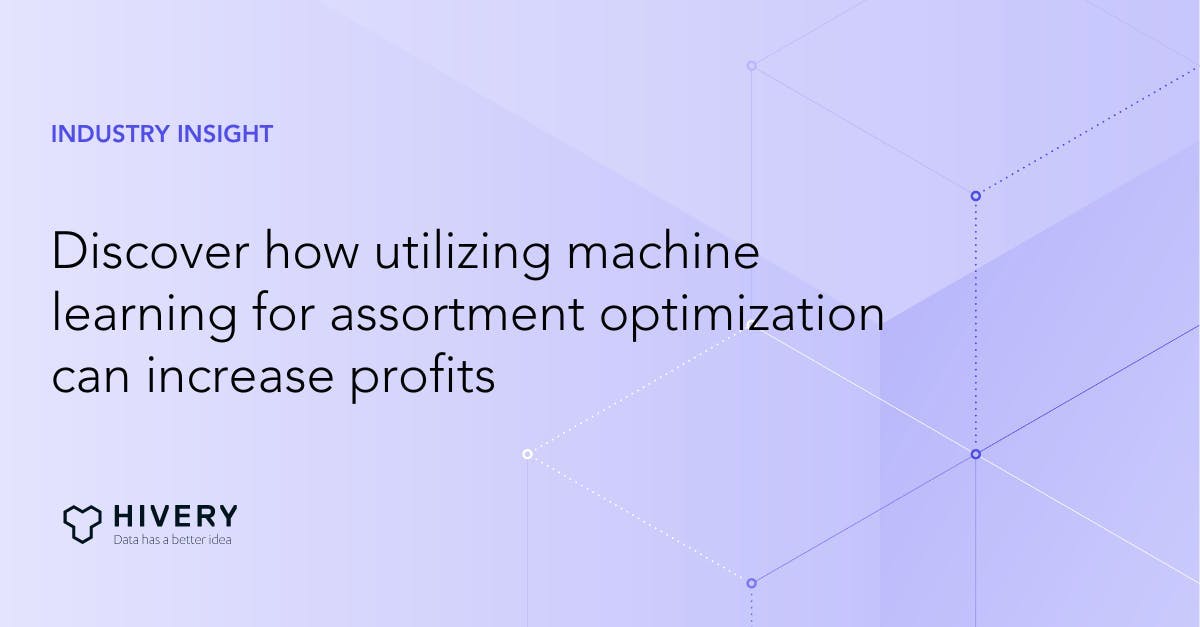
Discover how utilizing machine learning for assortment optimization can increase profits
The changing landscape of the grocery industry is forcing retailers to adapt their strategies quickly, focusing more on fresh and prepared foods, modifying store layouts for click-and-collect services, and optimizing product categories to cater to consumer demands. To remain competitive and boost sales, retailers often follow new product trends, which can lead to saturation and duplication in product categories.
About 17% of products in a grocery category may be duplicated. This is not only a concern for optimal category performance but also because having too many options can lead customers to abandon their decision entirely, as suggested by the "paradox of choice."
Managing a category to balance new products and eliminate duplication is difficult, as removing the wrong items could jeopardize customer relationships. Retailers must listen to their needs to understand which items are important to customers. Artificial intelligence (AI) can help achieve this by providing valuable insights and recommendations, allowing retailers to cater to customer preferences effectively.
Assortment Optimization: What Is It, and Why Is It Important?
Assortment optimization analyzes and adjusts a business's mix of products and services to maximize customer satisfaction, sales, and profitability. A well-optimized assortment strategy is crucial for businesses as it ensures that they:
- Attract and retain customers by providing a diverse and relevant product mix.
- Reduce inventory costs and improve stock management.
- Increase sales and profitability by identifying and prioritizing high-performing products.
Traditionally, assortment optimization has been a complex and time-consuming process involving extensive data analysis and manual decision-making. However, with the advancement of machine learning technology, businesses can now leverage data-driven insights and automation to optimize their assortment more effectively and efficiently.
Machine Learning: The Key to Assortment Optimization Success
Machine learning is the process by which computers learn from data and make predictions or decisions without being explicitly programmed. By applying machine learning algorithms to assortment optimization, businesses can:
- Analyze vast amounts of data to identify patterns and trends.
- Make accurate predictions about customer preferences and demand.
- Automate decision-making processes to optimize assortment quickly and efficiently
Let's dive deeper into how machine learning can optimize assortment and retain customers.
Identifying Customer Preferences through Data Analysis
When making decisions about product categories, it is crucial to consider customer feedback to ensure that they continue shopping at your store. While it may seem logical to base these decisions on profitability and popularity, this narrow perspective may not accurately reflect customers' preferences.
Customers are more concerned about the personal value of a product rather than its profitability to the store. But with manual processes, isolated teams, and a vast amount of data to analyze, it can be challenging to know what customers truly value.
This is where artificial intelligence (AI) comes into play, especially when combined with customer loyalty insights. AI can determine which products are essential for customer retention, regardless of sales or profit performance, allowing retailers to meet shoppers' specific needs accurately. Additionally, AI can predict outcomes and recommend which products to remove from the store, ensuring a more customer-centric approach to product offerings.
For example, a machine learning model can analyze store-level shopper purchase history to identify the most popular products and categories and the factors influencing purchase decisions, such as price, promotions, and seasonality. This information can tailor the assortment strategy accordingly, ensuring the product mix aligns with customer preferences and demand.
Better Customer Care
Integrating AI can enhance your understanding of your target audience and foster trust, which is crucial for excellent customer service. AI can gather data on customer habits and useful feedback, making enhancing your products and services simpler.
Retailers commonly use chatbots on their websites to offer smooth customer support. Furthermore, industry leaders have started employing robots for in-store help. For instance, ZARA uses robots to assist customers in collecting their orders; when a pickup code is entered, a warehouse robot is activated.
Automating Decision-Making Processes
Machine learning provides valuable insights for assortment optimization and automates decision-making processes. By leveraging machine learning algorithms, businesses can quickly and efficiently adjust their assortment strategy based on data-driven recommendations.
For example, a machine learning model can automatically identify underperforming products and recommend replacing them with more popular or profitable items. This automated decision-making process significantly reduces the time and effort required for assortment optimization, allowing businesses to respond more rapidly to changing customer preferences and market conditions.
Conclusion
Assortment optimization machine learning is a powerful tool that can help businesses optimize their product mix and retain customers more effectively. As a result, companies can stay ahead of the curve, offering a diverse and relevant assortment of products and services that cater to their customer's evolving needs.
Searching for AI-powered software to enhance your retail business's assortment planning? Look no further than HIVERY.
Our robust software is specifically crafted to assist CPG firms, and retailers in refining their product assortment tactics to boost sales. HIVERY's AI-driven software offers vital insights into customer preferences and actions, allowing you to simulate and fine-tune your product assortment strategies in real-time.
Additionally, you can monitor and evaluate your product’s assortment optimization effectiveness. Contact us today!
Related content you might be interested in:
- HIVERY's AI uncovers latent shopper insights & gains industry recognition
- Mastering Assortment Price Pack Architecture: How AI streamlines product across multiple retailers.
- Progressive Grocer - Innovating Category Management: Assortment as a Service
- Podcast - Tyson Foods' AI-Driven Journey to Innovation & Brand Protection at Target Stores